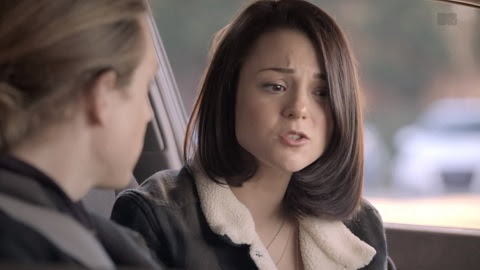 MTV’s one-hour drama Finding Carter centers on a girl, played by Kathryn Prescott, who was abducted at age three and as a teenager is reunited with a birth family whom she doesn’t know. Now, in its second season, the show has won critical praise and a growing audience through its provocative take on identity and family relationships.
MTV’s one-hour drama Finding Carter centers on a girl, played by Kathryn Prescott, who was abducted at age three and as a teenager is reunited with a birth family whom she doesn’t know. Now, in its second season, the show has won critical praise and a growing audience through its provocative take on identity and family relationships.
Finding Carter is shot in Atlanta, while most post-production work is done in Los Angeles. The editorial team is set up in offices provided by Chainsaw, Hollywood, a Sim Group company, which also handles color grading, editorial finishing and deliverables. Another Sim Group company, Bling Digital, serves as intermediary between production in Atlanta and West Coast post. Each production day, Bling receives camera media from the set, prepares dailies, editorial, finishing and back-up media, and sends elements across the country.
Editorial media is delivered overnight via a high-speed Internet connection. “When the editors arrive in the morning, dailies from the previous day’s shoot are ready and waiting,” says Ashley Glazier, associate producer for POP films, which produces the show for MTV. “We are able to get started much faster than most shows. Bling makes it all seamless.”
“Now that we have the opportunity to provide both dailies, through Bling, and finishing, through Chainsaw, as part of one company, it’s incredibly efficient,” says Bling Digital post-production manager Brennen Dicker. “It makes communication much easier. We were able to work out potential obstacles in advance and the result is a workflow that is very smooth. We’ve got their backs and they’ve got ours.”
As an aid to cross-country collaboration, Chainsaw has set up a Streambox video transport system in the show’s editorial offices. It allows the editing team to share video content in real-time with production staff. Producers in Atlanta can work with editors in Hollywood almost as though they are in the same room.
Finishing editor Mark Needham begins assembling a high-resolution version of the show, while colorist Kris Santa Cruz begins color grading with the original camera media. The beauty of the system is that both are able to work with the same sequence simultaneously. The flexibility of a clip based color workflow in Baselight allows a seamless integration to online in the Avid. Once the final color grade is applied, the show returns to Needham who adds visual effects (provided by an external VFX house) and titles to create the final master and other deliverable elements.
While television shows are often fully conformed and approved before grading, this workflow saves time and allows Finding Carter’s producers to conduct their review with final color in place. “We eliminate the intermediate review step,” Needham explains. “The producers see the final product after it’s gone through Kris’s hands and my hands. They like this workflow because it’s so efficient.”
Post work is also aided by the close proximity of editorial, grading and finishing. “If I’m working on the color and need Ashley or an editor to look at something, they are always close by,” says Santa Cruz. “Sometimes, they’re just across the hall.”
Given the tight deadlines that are an inevitable part of television post-production, the benefits of saving a few steps shouldn’t be underestimated. “We don’t often make last minute changes, but when we do, it’s extremely helpful to have everything under one roof,” says Glazier. “I feel very comfortable with the workflow we’ve set up. It’s a great process.”
The Sim Group simgroup.com
